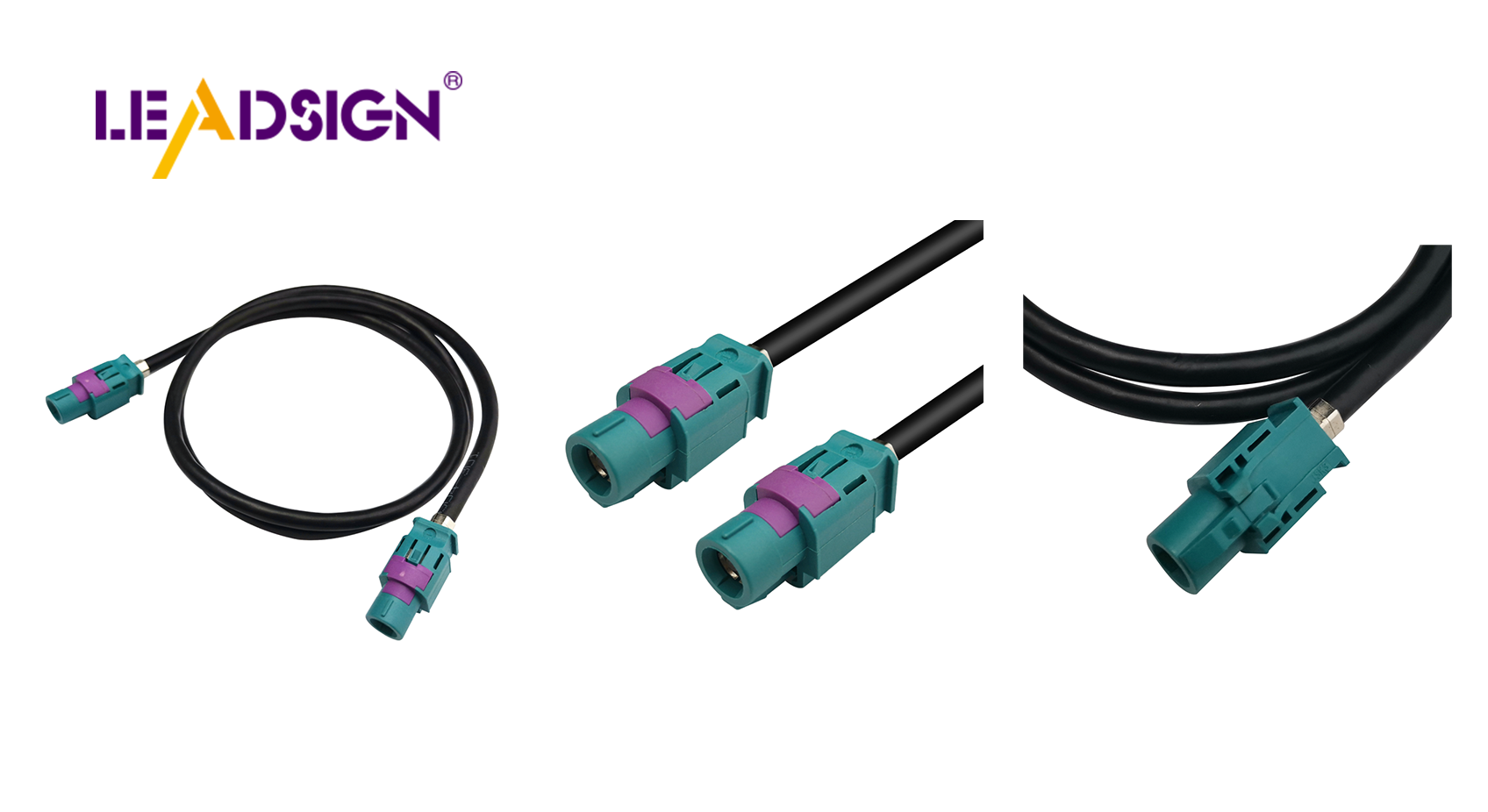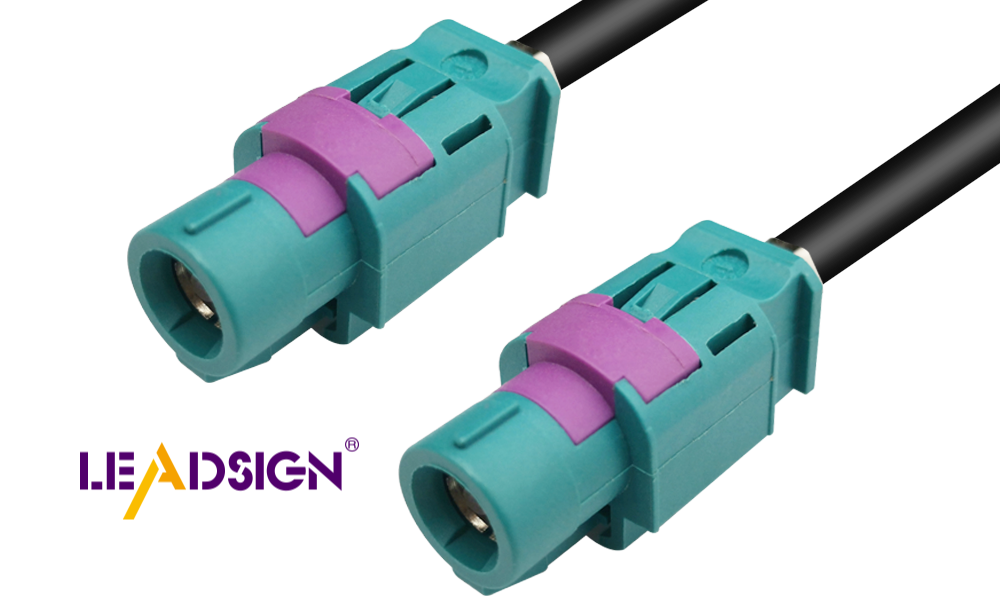Revolutionizing Vehicle Connectors with Cutting-Edge Technology

Vehicle connectors are important in today's vehicles. They help deliver power and send data smoothly. New designs like faster connectors and smaller sizes improve performance. The vehicle connector market is growing fast and may hit $21.3 billion by 2030 due to these changes.
Key Takeaways
Automotive connectors are essential for ensuring the reliability of safety systems and enhancing vehicle performance, making them crucial for modern car technology.
The shift towards electric vehicles is driving demand for specialized connectors that can handle high power and support advanced systems, ensuring safe and efficient operation.
Innovations like digital twins and contactless connectivity are revolutionizing connector design, improving reliability and reducing the need for physical testing.
Understanding Automotive Connectors
The Role of Automotive Connectors in Modern Vehicles
Automotive connectors are very important in today’s cars. They make sure electrical parts stay connected and work well. These connectors help safety systems like airbags and brakes work during emergencies. They also improve how sensors and controllers perform, making cars run better. By supporting smart technologies like ADAS and IoT, they make driving safer and smarter. They are built to last in tough conditions, staying strong in bad weather. Whether it’s using electricity or saving fuel, automotive connectors are key to modern car technology.
Key Functions of Automotive Connectors:
Keeping safety systems reliable and working.
Helping cars perform better and use less energy.
Supporting new technologies and electric systems.
Staying strong in rough environments.
Key Features of Automotive Connector Terminals
Automotive connector terminals are the main part of these systems. They keep wires and parts connected securely. Good terminals have locks to stop wires from coming loose. Crimping makes the connection strong, and cables stay in place. Coding features prevent mistakes when connecting parts, making them easy to use. Their design is accurate and efficient, which is important for today’s cars.
Challenges in the Development Trend of Automotive Connectors
Making better automotive connectors comes with challenges. Problems like material shortages can slow down production. Following rules in different regions takes time and effort. Fast changes in technology mean connectors need constant updates. These challenges show why new ideas and flexibility are needed in the automotive connector industry.
Challenge | Description |
|---|---|
Supply chain disruptions | Lack of materials and transport problems slowing production. |
Regulatory compliance | Following rules in different areas needs lots of testing. |
Rapid technological changes | Connectors must adapt quickly to new technology and uses. |
Key Trends in the Automotive Connector Market
Electrification and High-Voltage Automotive Connectors
Electric cars are changing the connector market. These cars need special connectors for high power. The connectors help move electricity safely and efficiently. They support systems like batteries and electric engines. As more people buy electric cars, companies make better designs. You can find these connectors in charging stations and electric engines. They make sure everything works safely and reliably.
Miniaturization and Lightweight Designs
Connectors are getting smaller and lighter for fuel-saving cars. Small designs save space for adding new features. Lighter connectors make cars weigh less, saving fuel. These connectors stay strong and work well in tough conditions. By using these designs, companies make cars better and more eco-friendly.
High-Speed Data Transfer for Advanced Vehicle Systems
Fast data transfer is important for modern cars. Systems like self-driving and entertainment need quick data sharing. High-speed connectors send data up to 10Gbps. They connect sensors, cameras, and computers smoothly. New technology makes data even faster for cameras and LIDAR. These improvements make car systems quicker and more reliable.
Eco-Friendly Materials and Sustainable Manufacturing
Car makers now care about the environment. They use recycled and lightweight materials for connectors. These materials cut pollution but still work well. Companies also use green methods to make connectors. This helps the planet while keeping quality high.
Innovations Shaping the Future of Vehicle Connectors

Digital Twins in Connector Design and Testing
Digital twins are changing how connectors are made and tested. These virtual models predict how connectors will work. They simulate real car operations to find problems early. This saves time and reduces the need for physical tests. For example, a digital twin can predict current flow with 95% accuracy. It also checks how current spikes affect the connector and estimates its lifespan. Using digital twins makes designing connectors faster and more reliable.
Contactless Connectivity for Enhanced Reliability
Contactless connectivity is a big improvement for connectors. It removes the need for wires and physical parts. This makes designs smaller and lighter. It works well in dirty or wet places where normal connectors fail. Sealed systems last longer and resist damage from vibrations. Without moving parts, they handle stress better. This technology makes connections smoother and more durable.
Advanced Manufacturing Techniques for Precision
New manufacturing methods make connectors more precise. 3D printing and automated tools allow faster production. Micro-molding creates small, detailed parts for tiny connectors. These methods ensure connectors meet strict standards. They are perfect for today’s advanced cars. Using these techniques improves accuracy and reliability in connectors.
Integration of Smart Features in Automotive Connectors
Smart features make connectors smarter and more useful. Sensors check connections and give instant feedback. They help find problems before they get worse. This prevents system failures and keeps cars safe. Smart connectors improve vehicle performance and reliability. Adding these features is a big step forward for connectors.
Real-World Uses of Modern Car Connectors
Helping Electric and Hybrid Cars Work Better
Modern car connectors power electric and hybrid cars safely. They handle strong electricity to keep cars running well. These connectors help manage batteries for better energy use. They link parts like the battery and motor to improve performance. As more people buy these cars, companies make better connectors for them.
Main Benefits:
Safe and strong electricity flow.
Good links between car parts.
Better safety and performance for electric and hybrid cars.
Making Driver Assistance Systems Work Well
Driver assistance systems need good connectors to work right. These connectors send power and data to sensors and cameras. They give quick information for features like avoiding crashes. Fast data sharing makes these systems respond quickly. New connector designs make driving safer and easier.
Key Features:
Quick data sharing for fast actions.
Strong links for cameras and sensors.
Safer and more comfortable driving.
Connecting Cars with IoT and Other Systems
Car connectors help cars connect with IoT and other systems. They send data smoothly between car parts for better communication. These connectors block interference to keep systems working well. Small designs fit tight spaces but stay strong. This technology makes cars smarter and more connected.
Main Advantages:
Smooth data sharing for smart systems.
Stops interference for clear communication.
Small but strong designs for tight spaces.
Improving Safety and Performance in Self-Driving Cars
Self-driving cars need connectors for fast data and power. These connectors help cars make quick and safe decisions. Their tough and light designs work well in bad conditions. They support important systems like driver assistance to make driving safer. These connectors keep self-driving cars running smoothly.
Key Contributions:
Fast data for smart decisions.
Strong designs for better performance.
Reliable help for driver assistance systems.
Car connectors are changing how cars are made and used. They are important in electric cars, managing high power safely. These connectors help systems like ADAS and V2X share data quickly. Companies create lighter, stronger designs to save energy and cut pollution.
New ideas like faster connections and green materials push progress further. Better manufacturing methods make strong and accurate connectors for today’s cars. As self-driving and smart cars grow, better connections will be needed. The future of car connectors means safer, smarter, and more efficient vehicles.
FAQ
Why are fast data connectors important in today’s cars?
Fast data connectors help sensors, cameras, and systems share information quickly. They make sure features like self-driving, entertainment, and safety tools work well.
How do green materials help car connectors?
Green materials are better for the environment and stay strong. They let companies protect nature while keeping connectors reliable and useful.
Why do car connectors need to be lightweight?
Light connectors make cars lighter, saving fuel and boosting performance. They also free up space for adding cool new features to cars.
See Also
Transforming Car Connectivity: Benefits of HFM Connectors
Exploring High-Speed FAKRA-Mini Connectors in Automotive Applications
Enhancing Data Transfer in Cars: Advanced Connectors and Cables
Discovering Benefits of Mini Fakra Connectors in Vehicles
Improving Data Transfer: Significance of High-Speed Car Connectors

